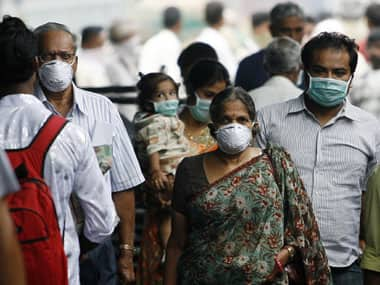After the 2009 global pandemic of swine flu that originated in the United States, the scare of another big outbreak looks real, but this time in India with most parts of the country reporting cases of the illness. Half the country looks hit already. [caption id=“attachment_2106277” align=“alignleft” width=“380”]  Representational image. Reuters[/caption] Even after the WHO declared in 2010 that the 2009-pandemic was over, sporadic outbreaks and lingering cases had been reported from different parts of the world that never swelled to epidemic proportions. However, what is emerging in India is slightly worrisome given the poor public health infrastructure and awareness in most of the badly affected states. The good news is that the incidence of fatality from swine flu is not very high and it can be prevented by adequate protection and other steps. If one is at higher risk of getting infected, with somebody at home already showing signs of the flu, there are preventive steps including prophylactic (preventive) medication possible. If there is a higher incidence in the community, there is also the option of vaccination. But if the public health officials, private medical practitioners, whom three-fourth of Indians turn to, and general population are unaware of the preparedness needed, which is the most likely situation in many of the affected states, it’s difficult to stop the spread. In 2009, when the outbreak spread in the US, before crossing over to Mexico and the rest of the world, President Obama declared the illness a national emergency. In India, like in many other developing countries, the tendency of the governments is to deny. For instance, in the past, places such as Delhi, and even better equipped states like Tamil Nadu and Kerala, had tried to play down the seriousness of local dengue outbreaks. Obama’s emergency declaration was a political step that gave broader powers and resources to every stakeholder to respond to the epidemic. Of course, the disease had already spread to 46 states by then and had led to the hospitalisation of 20,000 people. In India, the reported figure is still less than 10,000, but the actual cases could be much higher because of poor access to health facilities and inadequate surveillance. The fatalities also could be higher for the same reasons. The 2009 epidemic also demonstrates the importance of timely and sustained public health intervention. America, which rolled out steps on time with orders coming from the highest political office, had a Case Fatality Rate (CFR) of 0.007 to 0.048. In comparison, Thailand’s CFR was much higher - 0.58. Remember, Thailand has far superior public health facilities, and political commitment to universal public health, than India. The only way to arrest the spread of swine flu is to let people know how to do it and keep health facilities ready. In severe cases, patients need intensive care and even ventilator support. In less severe cases, they need anti-viral medications such as Tamiflu. But the most important is knowledge on how to prevent and control the spread - wearing masks in high risk environments, hand-washing etc. Have we seen any prevention and control messages from the government so far? Have the central and state governments issued preparedness alerts that will reach the farthest public health outposts? In fact, it’s already late because once the epidemic attains a certain momentum, it will be harder to control. The prevention and control measures should be handled by trained health professionals because panic will compel people to self medicate even for normal flu symptoms. Indiscriminate medication can lead to drug resistance and spread of drug-resistant strains of the virus. On the other hand, some may take real swine flu symptoms for normal flu and hence won’t seek medical help. Both are dangerous. Data from the US in the 2009 epidemic show that about 30-40 percent of secondary infection (after somebody is already infected) is within a household and the next - about 20 percent - was in schools. The pattern is similar in many other countries. Therefore, a large number of infections can be prevented by households being vigilant and making their school-going children adopt safe practices such as frequent hand-washing hand-sanitising. Beyond prevention, seeking timely medical help is important for avoiding fatality. More important is the availability of appropriate medical facilities. Big cities and towns may pass muster, but not the hinterlands where 75 percent of the people live. Unfortunately, India looks woefully inadequate. The most the governments could do at the moment is to spread the word soonest, while it ships preparedness kits, Tamiflu and vaccines, because behaviour change communication takes time to show results. The virus spreads much faster. Declaring the 2009 pandemic, WHO chief Margaret Chan had said that “the virus is now unstoppable”. India should act soonest. The threat of the epidemic also brings to focus the unavoidable need for universalisation of health. Manmohan Singh had promised it on an Independence Day and even asked the then Planning Commission to prepare a High Level Expert Group report, but defaulted. The present government also made some initial noises of “health assurance” for all, but went on to cut the health budget by 20 percent. Outbreaks such as the present one will expose the inability of the country’s public health system to reach out to 75 percent of the people and shamefully low public health expenditure of one per cent of the GDP. Everybody else in the world in raising public health expenditure, but India is lowering it while allowing the private health sector to grow at 15 percent a year. For accessing healthcare, impoverished Indians spend three times more (three percent of the GDP), than what the government spends, out of their pockets. Even for swine flu, they will end up doing the same.
What is emerging in India is slightly worrisome given the poor public health infrastructure and awareness in most of the badly affected states.
Advertisement
End of Article


)

)
)
)
)
)
)
)
)



